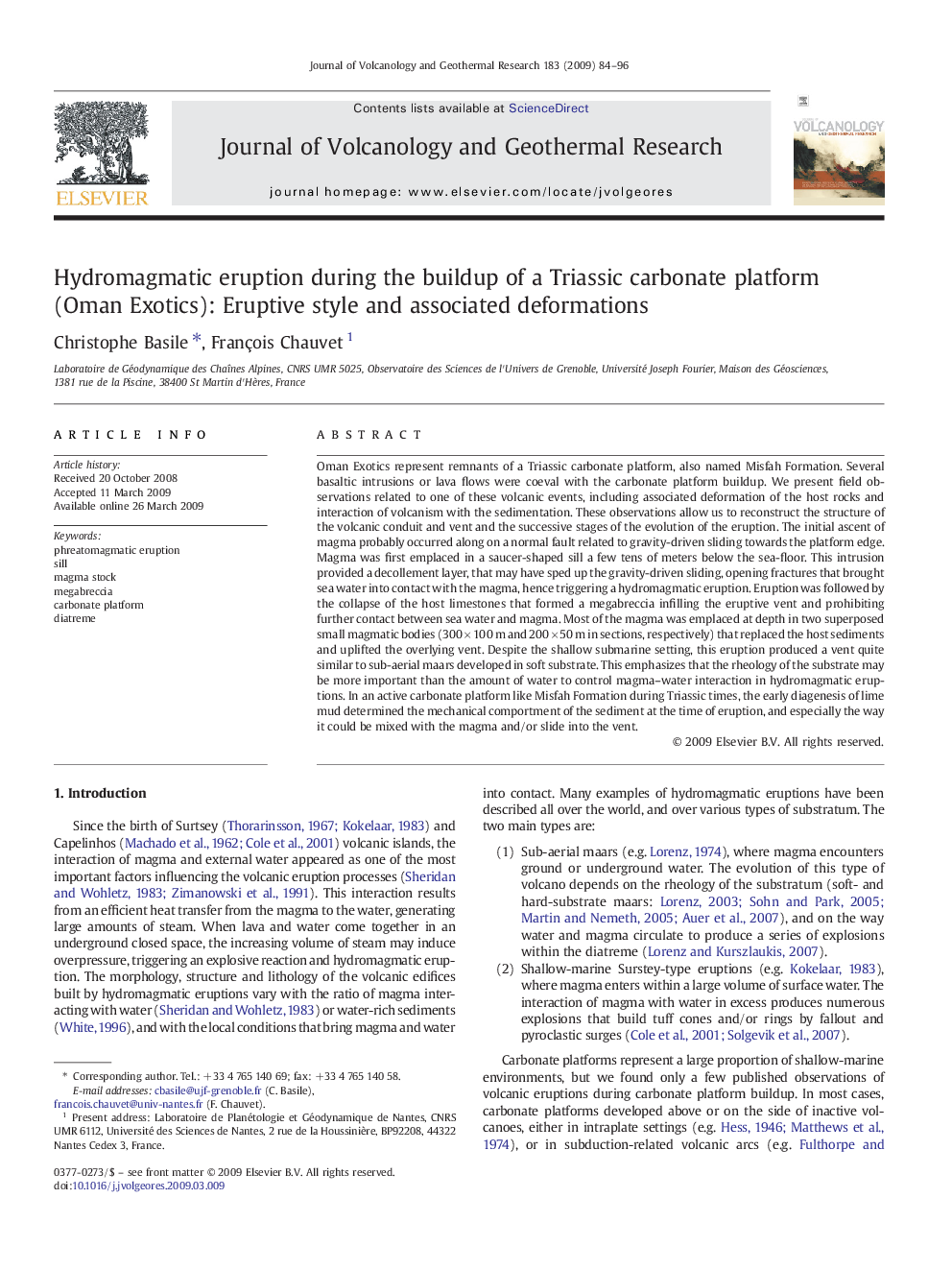| Article ID | Journal | Published Year | Pages | File Type |
|---|---|---|---|---|
| 4714323 | Journal of Volcanology and Geothermal Research | 2009 | 13 Pages |
Oman Exotics represent remnants of a Triassic carbonate platform, also named Misfah Formation. Several basaltic intrusions or lava flows were coeval with the carbonate platform buildup. We present field observations related to one of these volcanic events, including associated deformation of the host rocks and interaction of volcanism with the sedimentation. These observations allow us to reconstruct the structure of the volcanic conduit and vent and the successive stages of the evolution of the eruption. The initial ascent of magma probably occurred along on a normal fault related to gravity-driven sliding towards the platform edge. Magma was first emplaced in a saucer-shaped sill a few tens of meters below the sea-floor. This intrusion provided a decollement layer, that may have sped up the gravity-driven sliding, opening fractures that brought sea water into contact with the magma, hence triggering a hydromagmatic eruption. Eruption was followed by the collapse of the host limestones that formed a megabreccia infilling the eruptive vent and prohibiting further contact between sea water and magma. Most of the magma was emplaced at depth in two superposed small magmatic bodies (300 × 100 m and 200 × 50 m in sections, respectively) that replaced the host sediments and uplifted the overlying vent. Despite the shallow submarine setting, this eruption produced a vent quite similar to sub-aerial maars developed in soft substrate. This emphasizes that the rheology of the substrate may be more important than the amount of water to control magma–water interaction in hydromagmatic eruptions. In an active carbonate platform like Misfah Formation during Triassic times, the early diagenesis of lime mud determined the mechanical comportment of the sediment at the time of eruption, and especially the way it could be mixed with the magma and/or slide into the vent.
